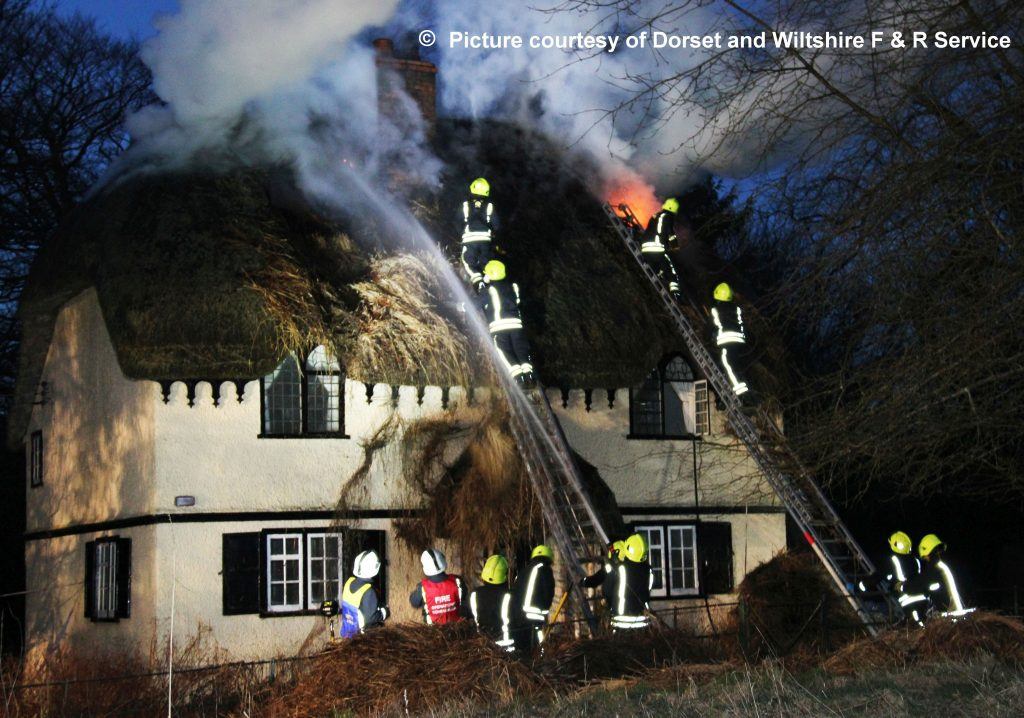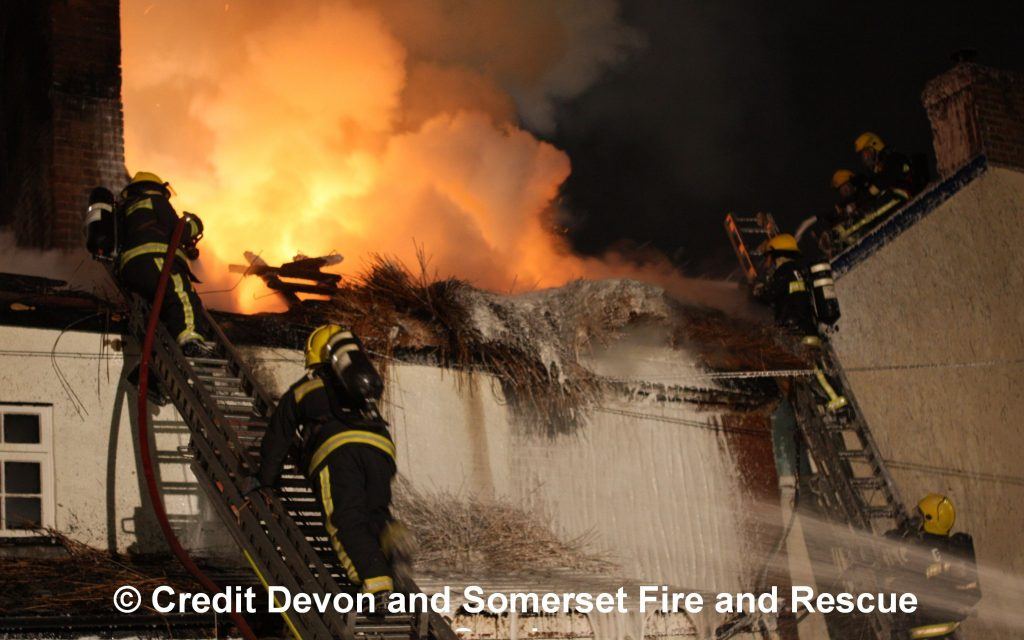Fire Safety for Thatch
We are proud to announce that we have updated our Thatch Fire Safety Leaflet to include the new evidence and proven information on the actual causes of thatch fires, from the Burgoynes Forensic Investigations of 148 actual thatch fires and also the Fire Protection Association research (driven by NFU Mutual and Historic England), along with recommendations.
The Facts
Understanding the facts on the causes and what happens with woodburners and chimneys with thatch enables improved advice on reducing those risks to be developed. The aim is to reduce the numbers of thatch fires as, we all know that once started, they are notoriously difficult to extinguish.
The major proven cause is Ejected Embers and Chimney fires, let us work together to promote reducing those risks, concentrating on the facts and working to get the number of thatch fires down.
Over recent years the thatch fire numbers have shown no real reduction. Furthermore and we quote “The research has demonstrated that ‘heat transfer’ is very unlikely to be a prevalent mechanism of thatch ignition”.
Understand, Reduce the Risk and Increase your Peace of Mind
Based on this evidence:-
- Please read our updated Thatch Fire Safety Leaflet.
- Share the information with anyone you know has an interest in a thatched property.
- Act now while we are still in the current burning season.
Life is about assessing risks and reducing them to improve your safety and we are pleased to be able to assist in this collaborative fight against thatch fire.
Our guidance is goodwill, not mandatory and based on years of passionate experience and knowledge which has been backed up by this serious, extensive and continuing research by recognised specialists.
The revisions to our Thatch Fire Safety Leaflet
Our revised Fire Safety leaflet includes:-
- The causes of thatch Fires – The Facts
- Reducing the risk of Ejected Embers – see below due to its importance
- General Fire Safety Advice
- Thatch Specific Fire Safety Advice
- Chimneys
- Woodburners and open fires
- Roof Voids
- Electrical
- External
- Alarms, Detectors and Early Warning systems
- Fire Safety Products for Thatch
Reducing the risk of ejected embers and burning material
- Take care when lighting fires eg use firelighters (paper and card not recommended)
- Take care when refuelling
- Burn seasoned hardwood/kiln dried wood maximum 20% moisture
- Sweep chimneys regularly – including during the burning season
- Keep woodburner baffles clean
- Run your woodburner/stove per manufacturers’ instructions. Avoid aggressive burning e.g. don’t leave ash pan door open
- Keep an eye on flue/chimney temperature. If it burns too hot it will speed up the hot flue gases and the risk of ejecting burning material. If it burns to low it will increase the soot and tar build up in the flue which increase the potential for a chimney fire.
- The greater the chimney height the higher any embers are dispersed away from the thatch.
- Spark arresters are not recommended
- Think carefully about bird guards
Building regulations stipulate 1.8m high chimney for woodburner installations.

Further guidance from the specialists is due out soon and we will be adding this to our resources as soon as we are able.
Many thanks to all interested parties and specialists who have been involved in producing this updated information.


